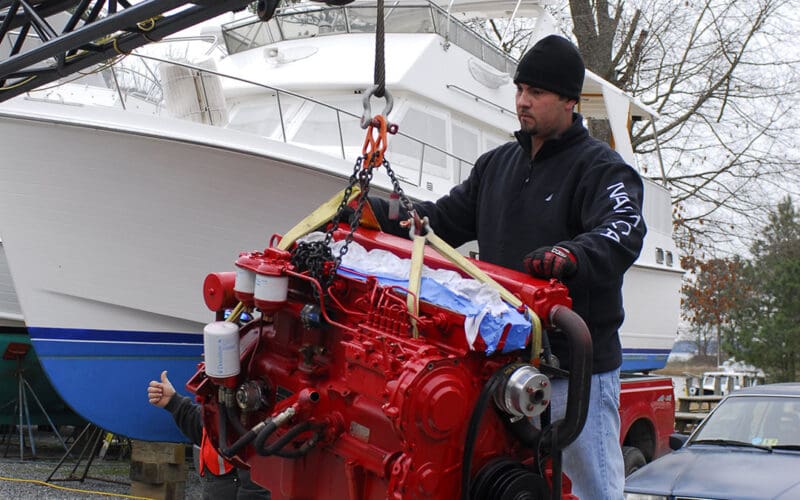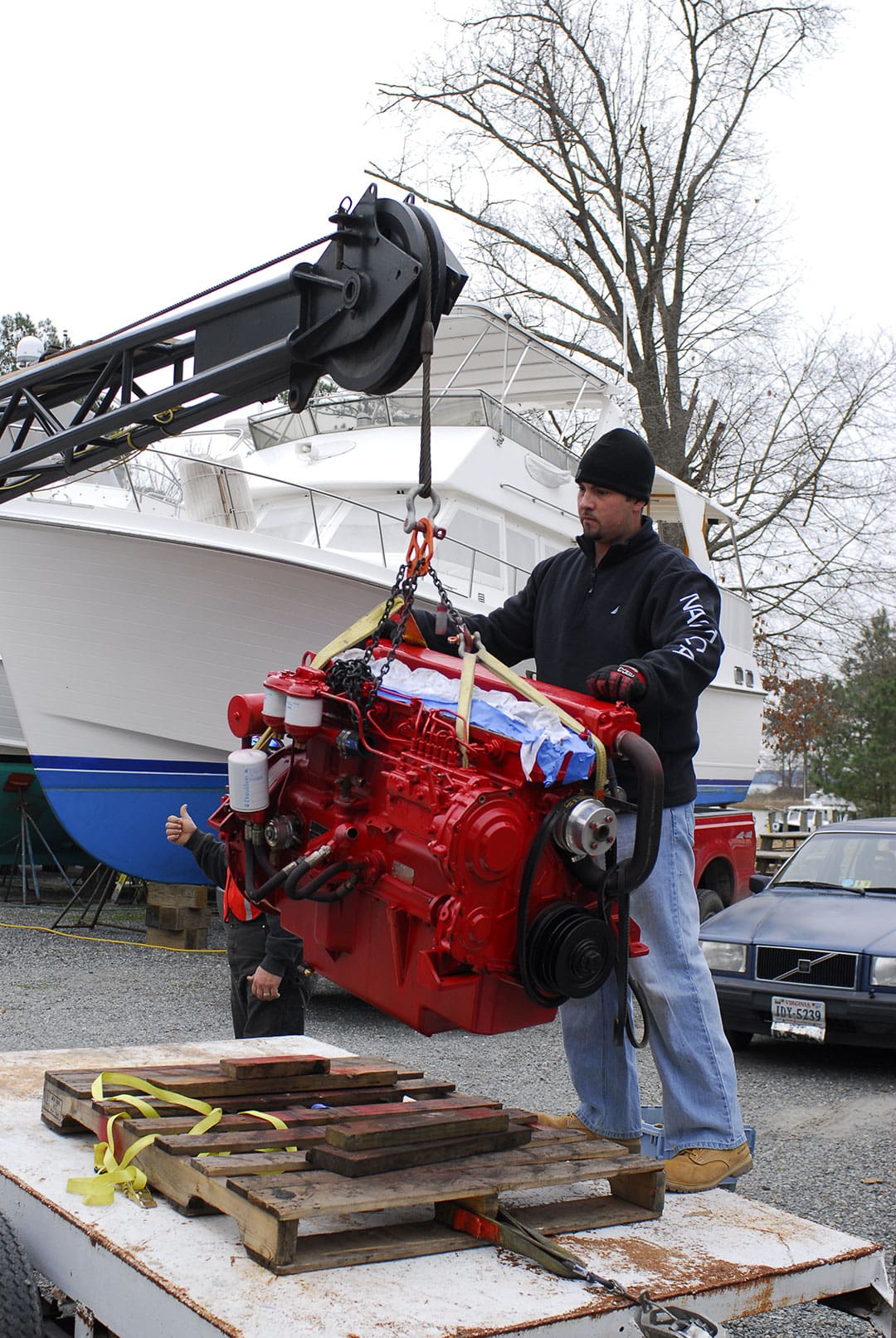
In my work within the marine industry the subjects of horsepower and torque invariably come up, and just as invariably their definitions are mangled. To characterize horsepower and torque as deeply misunderstood would be an understatement.
When distilled to its most basic, the difference between these two terms can be characterized thus: horsepower is a measurement of work over time, while torque is simply a measurement of force irrespective of time. Torque is an element of horsepower; however, it’s distinctly different. A firm understanding may enable you to better evaluate engine options for new or used vessels, as well as evaluating performance and fuel economy for a vessel you own or are contemplating purchasing.
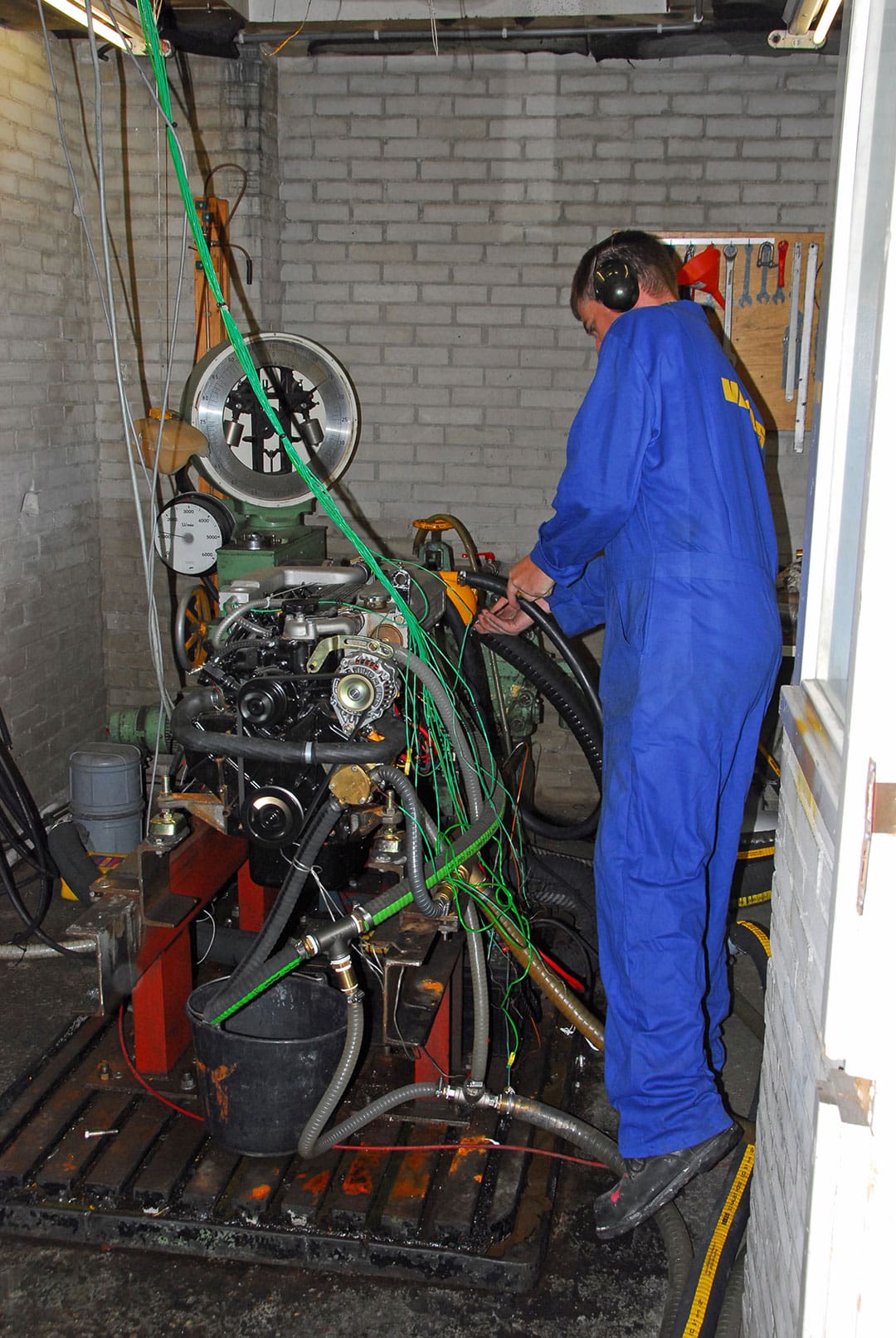
Horsepower history 101
Well over a dozen different types of horsepower measurement have been used since the term was first coined by James Watt, the developer of the “improved” steam engine, in 1782. He determined that ponies used to carry coal (or water) out of vertical mine could lift, via a rope and pulley, 22,000 foot-pounds per minute (more on what this means in a moment). The pony turned a mill wheel 144 times in one hour (2.4 times per minute). Watt also estimated that a pony could pull with a force of roughly 180 pounds. The wheel had a 12-foot radius, which meant the horse traveled 2.4 x 2π x 12 feet in one minute, which, using Watt’s formula of force multiplied by time divided by distance equaled 32,572 foot-pounds of force per minute, which was rounded to 33,000 pounds of force per minute or one horsepower. The unit of measure for horsepower, which involves a calculation of force over time, remains prevalent to this day.
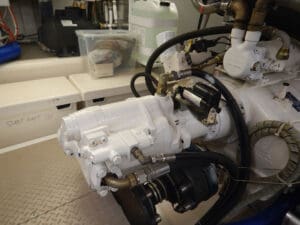
With the adoption of European Union standards for member countries, all horse power must be rendered in Watts (hp may be provided as well) for engines produced or sold in those countries. One horse power is equivalent to 746 Watts, or 0.746 kW. Therefore, a 100 hp(I) engine produces 74.6 kW.
There’s HP and then there’s HP
That, however, is not the end of the horse power story. In addition to defining horse power, its form of measurement must also be defined, and there are several definitions, including drawbar horsepower (dbhp), used for measuring locomotive power plants, indicated horse power (ihp), a theoretical measurement of a perfectly efficient engine, brake horse power (bhp), commonly used in marine and other applications to measure an engine’s power without any accessories such as marine gears, belts, water pumps, hydraulic power take off pumps etc, and shaft horsepower (shp), which is a measurement of the power available at the marine gear’s output coupling. For the most part, the latter two are most commonly used for measurement of marine engine “power” although it’s important to understand that in both cases “accessories” such as the aforementioned alternators and pumps are not included in most engines’ hp ratings and none of them take into account drag induced by shafts, stuffing boxes or cutlass bearings.
Although it varies, the friction losses imparted by the transmission are typically between 3 percent and 10 percent, with reduction gears (which are used in most applications) and V drives leaning closer to the higher end of that range. Therefore, the difference between BHP and SHP is typically small, although losses imparted by add on equipment and running gear can be significant.
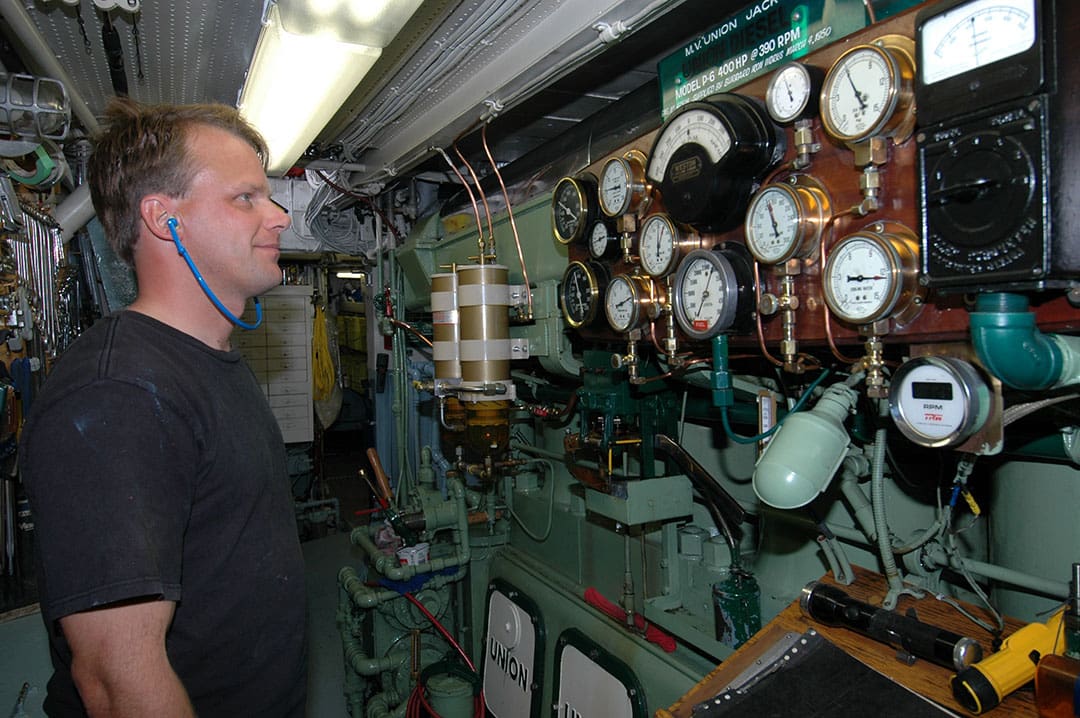
For instance, when belt and friction losses are taken into account, it’s not unusual for a high output alternator to absorb, at full output, as much as 10 hp. If it’s doing so while the engine is idling, then it’s worth considering that you may not have enough power for maneuvering or hydraulic thruster operation. A hydraulic power take off (PTO) can draw significantly more, enough to stop an engine cold in some cases if the gear attached to them is engaged while an engine is idling. This is why some vessels rely on smaller “pony” or wing engines for hydraulic PTO use while at idle, or a PTO on each engine in twin screw vessels.
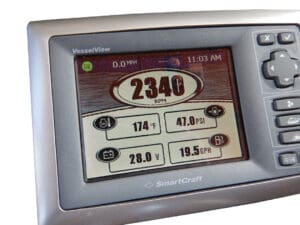
In short, the unit or method of measurement of horsepower for a marine engine is less significant than the importance of comparing like measurements and units. If you are comparing engines or completed vessel’s engine, make certain you are also comparing BHP to BHP or kW to kW etc, and take into account add-on accessories such as alternators and hydraulic systems.
Torque
Like horsepower, torque is also a measure of energy, however, it has nothing to do with time; it could be imparted over one minute or one year. If horsepower is energy measured over time, torque could be thought of as the process for transforming or converting that energy into a useful motion, one that twists, like an axle or propeller shaft.
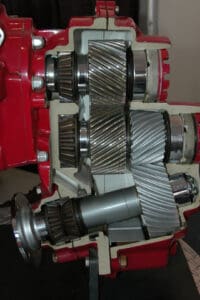
The definition of torque or the understanding thereof, can, however, be a bit difficult to grasp, that is until the details are explained. For illustrative purposes, imagine torque is simply a force in pounds multiplied by distance. You’ve almost certainly demonstrated this yourself by using a longer wrench or an extension pipe slipped over a socket wrench (the “extension” is used in this case on the handle, not to be confused with extensions used on the socket end) when removing a stubborn nut or bolt, or a piece of pipe used on the handle of a stiff seacock. The extension multiplies the torque applied to the fastener by virtue of the distance that the force is applied by your hand from the point where it’s applying twisting motion. Ten pounds of force applied to a one-foot-long wrench imparts 10 pound-feet (it’s pound-feet in this case, not foot-pounds, the latter represents work or an expenditure of energy) of torque, or 13.5 Newton meters/Nm in the metric system, while ten pounds of force applied to a two-foot long extension enables you to subject the fastener to 20 pound-feet of torque or 27 Newton meters. It’s a rare case where Mother Nature seems to be offering up a free lunch.
Engine torque is measured using the following formula, (5,252 x hp) ÷ rpm. In order to get more power from an engine, and because horsepower is a measurement of power over time, it would seem then that one way to squeeze more of that power from an engine would be to make it turn faster. In fact, this approach works well and it’s why the small, light yet powerful engine on my Italian motorcycle spins up to 8,000 rpm, to develop more power from a smaller power plant package. That isn’t a free lunch, however, as turning engines at higher speeds comes with its own set of side effects, increased wear, decreased longevity and increased cost of engineering, materials, balancing and machining to name just a few.
Math-minded readers will have noticed in the above formula, however, that as rpm increases, torque decreases, and there goes the free lunch part, yet again. This is why traditional, large, slow turning diesels deliver mountains of torque. It’s why my Ford F-250 Powerstroke diesel pick-up can haul a 4,000 pound boat up a ramp at idle speed, with my foot off the accelerator pedal (with a little help from its reduction gears, I’ll get to that in moment), and why the 1940 vintage former tugboat, turned fishing charter vessel, Union Jack is powered by a six cylinder, 400-hp engine that turns at 340 rpm and produces a whopping 6,180 pound-feet of torque. It’s a heavy slow turner, weighing in at 38,000 pounds. By way of comparison, a modern, high speed 400-hp diesel may produce around 600 pound-feet of torque (measured at the engine’s crankshaft output) and weigh around 1,000 pounds.
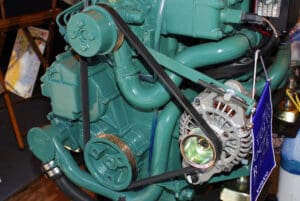
Does this mean that if you want torque, which is what really turns the prop, then you must have a large, heavy diesel? The short answer is no, because while Mother Nature can’t be fooled, you can barter with her. What if we could keep the engine rpm high, to maintain horsepower, while slowing down the shaft/prop rpm in order to coax more torque out of the equation? In fact, this is done regularly by using a component known as a reduction gear, which is bolted to and often appears to be part of the marine gear (often erroneously called a transmission). Reduction gears do just that, reduce rpm at the shaft using gears, while allowing the engine to continue to turn at higher rpm.
For example, a 150 hp engine that turns at 4,000 rpm can produce 197 pound-feet of torque. Not bad for a small, light, high-speed diesel engine. However, with a 2:1 reduction gear installed, the shaft rpm will be reduced to 2,000 rpm, making the torque available to the propeller about 394 pound-feet, a significant increase. Once again, there are tradeoffs for the reduction gear, and rules that must be followed, however, I’ll save discussion of those for another article. In general, however, the price paid for this gear magic is two-fold. First, there’s the inefficiency and friction induced by the reduction gear, which may account for a 3 to 5 percent loss. Second, the reduction gear adds weight, complexity, and expense to the installation. In the end, however, it’s a net gain, and it’s why smaller, lighter high-speed diesels have become more popular in the past 25 years. While heavy, slow turning diesel engines are desirable in many ways they also have drawbacks and as such the higher speed engine and reduction gear combination makes good sense in many applications.
When comparing engines and power output ensure like units and measurement methods are being used and remember, it’s not about horsepower alone. n
Steve D’Antonio has managed boat yards and custom boat building shops is an ABYC expert and written more than 1,000 articles. His company (www.stevedmarineconsulting.com), offers marine systems consulting, management and technical training.

